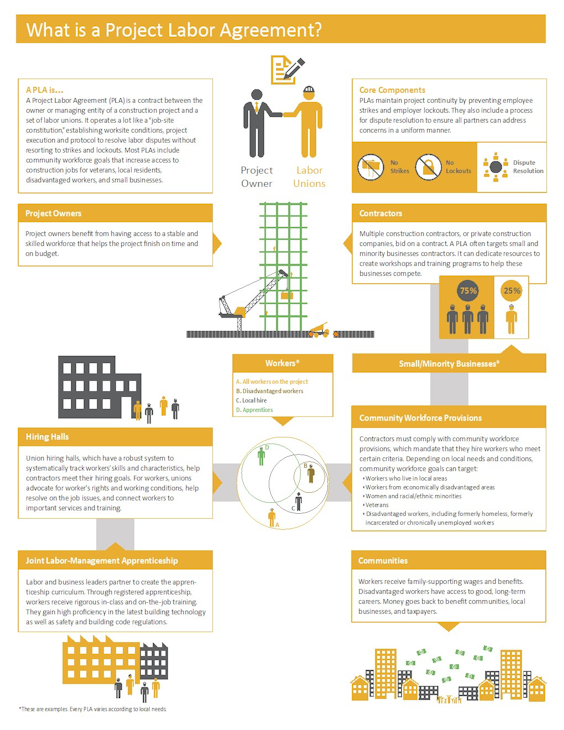Missing Links | Untangling the Supply Chain
Originally posted on constructionexec.com | By Sam Barnes
All things being equal, the supply-chain problems that seem to be touching every sector, industry and sphere of life in the United States could ease up later this year. If the economy works the way it usually does, the production of goods and materials will ramp up in response to higher prices and alleviate the current logjam.
Unfortunately, two years into an ever-mutating pandemic, all things aren’t equal.
Which is why economist Anirban Basu predicts that supply-chain disruptions—not to mention inflation—will continue through much of 2022. “We’re still seeing shutdowns in various parts of the world because of the spread of COVID-19, most importantly in China,” says Basu, chair and CEO of Sage Policy Group and chief economist for Associated Builders and Contractors. “The country is home to a quarter of global manufacturing, so Chinese manufacturing activity has a disproportionate impact on production.”
Even if the omicron variant diminishes quickly and manufacturing regains steam by mid-2022, as expected, the backlog of orders is so great that contractors will still have to wait for materials. “Because of that,” Basu says, “contractors will confront elevated input prices over the near term.”
While it’s no longer news that construction companies can’t count on materials to be available when or at the cost they’re needed, it might be surprising to realize that the pandemic didn’t cause this entire situation. Shutdowns in upstream manufacturing facilities were followed by a range of transportation issues, including shipping delays at multiple West Coast ports, rail bottlenecks, workforce deficiencies and an alarming lack of trucks.
All of that combined to create a logistical perfect storm across the supply chain. And the problem hasn’t peaked yet. “The amount of goods the ports are handling now is far above pre-pandemic levels,” Basu says. “And while they’re taking steps to deal with this, they just can’t keep up with this massive movement of goods between economies.”
That’s the bad news. The good news: Contractors are figuring out a variety of fixes, workarounds and other solutions for untangling the supply chain.
PRICE VARIABILITY AND UNPREDICTABILITY
For years, the owner-designer-contractor conversation around materials was primarily about cost and vendor alignment. Now, there’s another, more urgent variable: lead time—which, for most projects, is much longer and more unpredictable than ever. Expedited shipping costs and inflation are now huge factors during every project analysis, with some owners, particularly in the industrial market, doling out millions of dollars for expedited shipping.
Brandon Mabile, business development manager for Performance Contractors in Baton Rouge, says industrial owners are more sensitive to supply-chain issues and must closely analyze return on investment for every dollar spent. In recent months, the “cost economics” due to inflation and lead-time issues have flipped, resulting in many projects being postponed or canceled. Still, Mabile expects Performance’s work volume to increase in 2022. “Last year, we really felt the impact of projects being pushed or canceled due to the supply chain, inflation or political reasons,” Mabile says. “We’re now seeing a little bit of a rebound.”
For their part, contractors are getting involved earlier in a project’s lifecycle and collaborating with owners and other team members to work through logistical hurdles and minimize risk. Some of the more radical solutions have been in procurement, with the entirety of a project’s materials and equipment more frequently being ordered long before groundbreaking. The offsite modularization of project components has become another popular way to minimize risk, a trend that began long before the pandemic.
Mabile says Performance, which primarily works capital projects in the industrial market, has been challenged more by price instability than shipping delays in recent months. “We’re able to get the materials that we need, for the most part, by shopping around,” he says, “but price variability and unpredictably is a big problem when bidding. For some of the more exotic materials, prices are being quoted for hours or days instead of weeks or months.”
To accommodate this new reality, Performance has become more upfront with clients about the challenges it’s facing. “We make sure they understand where cost growth may or may not occur, and we look at such things as risk sharing when there’s a certain potential of price growth,” Mabile says. “Other times, we’ll get a price; then when it’s time to start the project, we’ll get two or three bids and provide the owner with a cost-plus rate.” He adds: “Obviously, we can’t take a project and lose our tails because the cost of materials goes through the roof.”
Mabile also sees a trend toward “lump-sum” contracts in the industrial space. Plus, owners are buying more of their construction materials before even hiring a contractor—which requires that designs be completed well in advance of a project breaking ground. “In those cases,” Mabile says, “they might buy 80% of the materials and leave us to buy the last 20%.”
TRIPLE-QUOTING JOBS
Brendan McAndrews, chief operating officer of McAndrews Windows and Glass in Cincinnati, says his glass and glazing company has experienced “a multitude” of supply-chain issues over the last year. Inflation is a major concern, particularly when it comes to aluminum, which has increased some 30% to 40% in cost over the last year. Aluminum extruders are also running behind schedule.
The company’s biggest recent challenge has been getting a critical PPG paint additive that enables paint to bind to aluminum (as one of its services, McAndrews manufactures aluminum systems to support the glass). About 20% of McAndrews’ projects are currently being affected by the issue. In each case, the owner is given the option of switching from paint to an anodized finish or a different paint supplier to avoid a delay. “It has become a significant factor in the last month or two,” McAndrews says, “and taken our lead times from 10 weeks to 20-plus weeks.”
As a result, McAndrews is “triple-quoting jobs in many instances, just to get them off the ground,” he says. The company is also stocking up on standard colors and systems to sidestep potential delays. Still, there’s only so much they can do. “We stock enough so that we can turn around some of the small jobs pretty quickly without the impact on cost or lead time,” McAndrews says, “but we’re not going to have enough for a typical big job.”
Similar to Performance, McAndrews is transparent about supply-chain issues with owners, meeting with them early in a project to discuss flexibility in terms of timeline, specifications and vendors. The lead times on materials often come as a shock. “We send them submittals, tell them the timelines and they freak out,” McAndrews says. “Then we’ll give them other options. They can go with an anodized finish, or there are other brands that might not be having similar issues but don’t have the same color range as PPG.”
The planning process takes significantly longer, as a lot of additional back and forth is needed between architects and owners regarding changes in specifications, cost impacts and other factors. “There’s just more conversation than there used to be,” McAndrews says. “It’s typically a difficult conversation, where they’ll need to change the specs or wait until we have product.”
THE RIGHT DIRECTION
Brett McMahon, chair and CEO of Miller & Long Co. Inc. in Bethesda, Maryland, says his concrete construction firm was less affected than others at the onset of the supply-chain disruption, but that’s changing. Miller’s problems began with some rather obscure products, such as the cans for spray paint and nails, “but increasingly the shipments of cement and other items are getting hard to schedule,” McMahon says. “Just finding someone to drive the delivery truck is an issue.”
It’s a job-wide problem. “A material delay for one contractor can have a ripple effect that impacts the entire schedule,” McMahon says. “Decisions that don’t have anything to do with us still impact us and everyone else on the job.” Fortunately, designers and owners have become more flexible and more willing to accept materials substitutes. “It was an uphill battle in the beginning,” McMahon says, “but that’s been getting better.”
To Michael Coakley, co-president of drywall contractor C.J. Coakley Co. Inc. in Fairfax, Virginia, it’s clear that materials distributors are absorbing the brunt of the problem, “because they’re the ones having to do the gymnastics on this.” He adds: “The manufacturers keep changing their lead times and prices, and they have to be the ones to deal with it. They’re all struggling mightily right now to deal with that.”
Steel is a particular concern. C.J. Coakley typically buys coil steel from wholesalers to make studs, but in 2021 the material was nowhere to be found. And while the supply has rebounded somewhat, price quotes have been reduced from 120 to 30 days. “Steel is in such short supply that the prices have climbed astronomically,” Coakley says. “Steel is in everything. It’s in concrete, conduit, mechanical equipment—everything. So, they’re getting hit on all ends of the spectrum for this stuff.”
Auto manufacturers have exacerbated the problem. As they ramped up production at the end of 2020, they placed massive orders for steel. “Their answer to the supply-chain problem was to order more than they needed,” Coakley says. “Everyone has this massive demand for something that’s just not available, and it drove up the price.” He adds: “The worst thing is the uncertainty on pricing. In the past, we might have been plus or minus 10%, but not 400%.”
Looking ahead, however, Coakley is already seeing a change in the right direction. “I can actually get supply now,” he says. “It’s three or four months out, but we can get it. That means there’s more product in the marketplace.”
Other materials that Coakley needs are also being affected, if not to the same extent, including drywall and studs, which have six- to eight-week turnarounds, “so we’re projecting out a lot further than we would normally.” That’s become par for the course in the current environment, where earlier and more comprehensive planning is critical. “If you’re planning out in front,” Coakley says, “you should be able to get the material you need.”
HIGH PRICES = HIGH PRICES
Despite the uncertainty, Basu is confident that basic economic principles eventually will hold true. “The cure for high prices is high prices,” he says. “That means as the year progresses, there will be some alleviation of commodity prices such as steel, copper and aluminum, because producers have an incentive to produce more in a high-price environment.” Basu also expects to see an uptick in equipment purchases “precisely because producers can’t find enough workers. They’re looking to boost productivity, and that leads to the purchase of more equipment.”
Of course, the pandemic still has the potential to spoil everything; certainly, all bets are off if another variant emerges later in the year. Additionally, surging energy prices are making production less profitable. “It’s taking more money to transport your materials,” Basu says. “It might have wiped out whatever profit margin you might have had.” As a result, even though some owners might be planning to increase production, they nonetheless could choose to wait “because they’re getting squeezed by whomever is delivering your product.”
But, still, Basu offers more good news. In 2021, the world set a record for cargo-ship orders, and supply-chain issues have created a desire to expand manufacturing capacity. “As that happens,” Basu says, “we hope to see some of these supply-chain issues abate and prices fall.”









